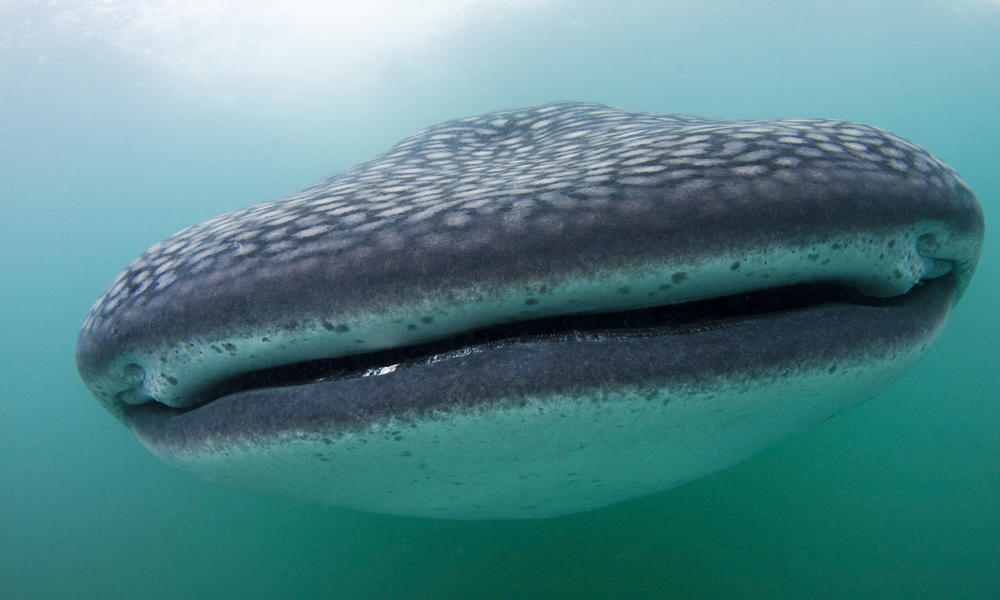Source: http://www.worldwildlife.org/stories/shark-facts-vs-shark-myths?utm_campaign=species&utm_medium=social&utm_source=facebook.com
Source for shark attacks statistics: Florida Museum of Natural History
Myth #1: Whale Shark; Myth #2: Zebra Shark; Myth #3 White Shark; Myth #4: Thresher Shark; Myth #5: Silvertip Shark
WWF dispels common myths about these important marine species
Let’s face it—sharks have a bad rap. Thanks to sensationalized stories and stereotyping, sharks have become feared rather than revered. They’re labeled as dangerous, indiscriminate killers that eat anything in sight. But in fact, sharks are most often the victims. They’re killed by the millions annually to supply demand for their fins, which are made into soup and eaten as a status symbol. Such demand for fins has led to overfishing and illegal fishing, depleting shark populations worldwide.
Sharks are a critical part of the marine environment and must be protected. WWF and TRAFFIC are working to address the trade in shark fins and meat, striving for better fishing regulations to protect shark populations and also reduce market demand. We advocate for better trade protections at international meetings (such as the Convention on International Trade in Endangered Species (CITES)), and our efforts have paid off. In 2013, some of the most threatened sharks and rays received the attention they deserved and governments will now take steps to ensure they are sustainably caught and traded legally.
However, our work continues as many other shark species still remain unprotected and heavily exploited. Here we address and dispel some of the most common shark myths and deliver the shark facts. Take a look and learn a bit more about these fascinating fish.
SHARK MYTH #1: SHARKS ARE ALL MAN-EATERS
Humans are not food for sharks. The sharks involved in incidents with humans are often hunting for similar-sized prey to humans, such as seals or dolphins. The majority of shark species actually eat fish or invertebrates, such as squid or clams. There’s a diversity of feeding behaviors: large filter feeders, such as the whale shark, strain plankton through modified gills, while bottom-dwelling suction feeders, such as the nurse shark, appear to “inhale” food into their mouths.

SHARK MYTH #2: ALL SHARKS ARE BIG WITH LOTS OF SHARP TEETH
Not all sharks are large, bulky and torpedo-shaped like the ones we see in movies. There are actually more than 400 different species of sharks and they come in a variety of shapes and sizes, from the tiny 8-inch-long deepwater dogfish to the massive 40-foot-long whale shark. And not all sharks have a mouth full of large pointed teeth for tearing flesh. The basking shark has tiny teeth that it doesn’t even use for feeding, and the horn shark also has molar-like teeth that it uses to crush hard-shelled prey.

SHARK MYTH #3: SHARKS ARE NOT IMPORTANT
Sharks play a very important role in marine communities and help maintain the delicate balance of life. Many species sit at the top of the food chain, keeping other marine animal populations in check. Some sharks feed on the sick and weak, which helps prey populations to stay healthy—many of which are also commercially important fish species.

SHARK MYTH #4: NOTHING CAN HURT SHARKS
Shark populations around the world are in rapid decline. Sharks grow relatively slowly, take many years to mature and produce relatively few young. They also suffer from the large and growing demand for shark fins and the general lack of management of shark fishing. Populations simply cannot replenish at the same rate as they are caught and finned to meet market demand. Sharks are also often caught as bycatch in longlines, trawl nets and seine nets, and simply discarded.

SHARK MYTH #5: SHARKS ATTACK PEOPLE OFTEN
Shark attacks are extremely rare; you are more likely to be struck by lightning than attacked by a shark. There were only seven shark-related human deaths in 2012 compared to around 73 million sharks killed annually by people. Sharks are in all the world’s oceans, and even though more people are in oceans than ever before, the incident rate has not increased.

